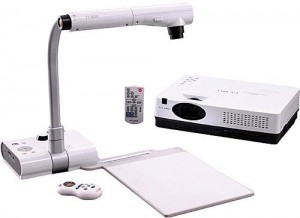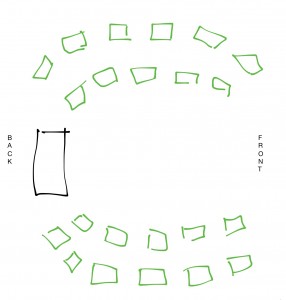On our third Thursday at Annieville we spent the first whole day with our assigned classroom. I was very pleased to be in the grade 7 class for the whole school day. It allowed me to start to get to know the students, class, and teacher better.
The highlight of my day was watching the democratic process come alive in the class. It all started with the idea of the grade 7’s to have a haunted house for the school. When the teacher informed them that this would mean they would not have a Halloween party this year some of the students decided they would rather have the part instead.
So, the teacher put it to a vote. Everyone stood up and if you wanted a party instead of the haunted house you sat down. The majority of the students stayed standing. Then something wonderful happened. The students participated in a respectful and thoughtful debate on the topic.
The student who were wanted a party tried to persuade the student who wanted a haunted house to change their vote. Their reasons ranged from “a party will be less work and more fun” to “we aren’t allowed to do anything scary anyways so why bother”. Slowly the tide began to change and about half of the students were sitting.
Then the students who wanted a haunted house were allowed to argue their case. They reasoned that they had a Halloween party every year but a haunted house was special because it was something only grade 7’s could do. They brought up that a party was something only they would enjoy from but a haunted house was something everyone in the school could enjoy. Their reasoning started to change the mind of the students who had sat down.
Some students started to express that if the class voted in the other direction they would be very unhappy. This brought up the chance for the teacher to talk about how we live in a democracy and recent election. She used the example of how it would be silly if those people who wanted Stephen Harper or Tom Muclair to get into office went on rampage or pouted for four years. She explained we have to make the best out of what we have and that we need to respect the democratic process and the will of the majority.
Before the final vote the teacher spoke to the students about the importance of being true to themselves and voting for what they wanted not to just vote for their friends. She told them that their vote does count and it’s important to vote for what they wanted. However, some students did end up changing their vote once they saw the marjority. After listening to Dr. Lieberman at the Bell Centre yesterday I can understand why. I imagine the social shift that is taking place in the brains had a lot to do with that choice.
This process took up about fourty minutes. The teacher never tried to rush the students to get the project at hand. She let the process unfold and everyone’s voice be heard. While I knew that the teachers preference was to have a party and she told the students that a haunted house was outside of her comfort zone she never once tried to influence them. This was amazing to me because it teaches young people that their voices matter and how to partake in the democratic process.
Another unique lesson that came of this debate was the idea of consent. The student wanted to jump out and grab people. The teacher was able to bring up the topic of consent by explaining that we never touch anyone with their permission. She did not use the language of consent but essentially that’s what she was talking about. She framed it as non-violence which I learning is a core value at Annieville.

